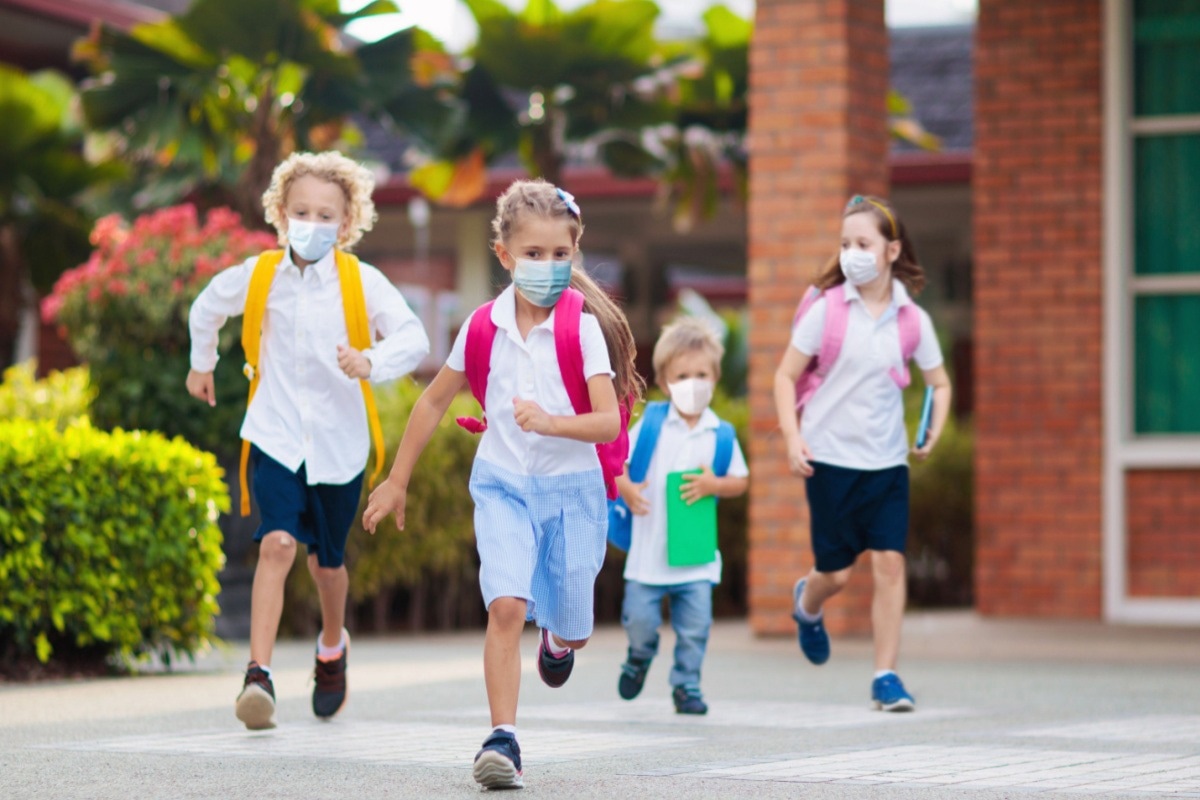In a recent study posted to the bioRxiv* preprint server, researchers assessed the antibody response and cellular immunity induced by severe acute respiratory syndrome coronavirus 2 (SARS-CoV-2) Omicron infection in children.
 Study: Primary Omicron infection elicits weak antibody response but robust cellular immunity in children. Image Credit: FamVeld/Shutterstock
Study: Primary Omicron infection elicits weak antibody response but robust cellular immunity in children. Image Credit: FamVeld/Shutterstock

 *Important notice: bioRxiv publishes preliminary scientific reports that are not peer-reviewed and, therefore, should not be regarded as conclusive, guide clinical practice/health-related behavior, or treated as established information.
*Important notice: bioRxiv publishes preliminary scientific reports that are not peer-reviewed and, therefore, should not be regarded as conclusive, guide clinical practice/health-related behavior, or treated as established information.
Infection rates associated with the SARS-CoV-2 Omicron variant have been consistently high across all age groups. Seroprevalence of SARS-CoV-2 among children has notably increased from 40% to 82% after the emergence of Omicron. Hence, extensive research is needed to understand the extent of the immune response induced by Omicron infection in younger populations.
About the study
In the present study, researchers examined the cellular and antibody immune response elicited after SARS-CoV-2 Omicron variant infection among children aged between six and 14 years and compared the outcomes to previous coronavirus disease 2019 (COVID-19) infection and vaccination status.
The team assessed the neutralizing ability of sera obtained from individuals who reported a natural infection with SARS-CoV-2 variants, which were predominant before Omicron. Antibody binding ability to the SARS-CoV-2 wild-type and Omicron spike (S) and receptor-binding domain (RBD) regions was estimated in serological samples collected from 54 children aged between five and 15, infected with a pre-Omicron variant. These estimates were compared to that of 30 adult participants and unvaccinated adults and children.
The team also recruited 43 unvaccinated children with a positive SARS-CoV-2 result obtained during the Omicron wave of infections. The antibody response after a primary or secondary infection was determined. The primary infections were cases with Omicron as the first COVID-19 exposure, and secondary infections were cases with prior pre-Omicron variant infection. Furthermore, the team determined the serological responses after primary and secondary infection among the children.
Functional humoral immunity was also estimated with a pseudovirus-based neutralization assay performed after primary and secondary Omicron infection. Furthermore, the team recruited 32 children aged between six and 14 who were vaccinated with the BNT162b2 COVID-19 vaccine, including ten double-vaccinated and 22 single-vaccinated children.
Results
The study results showed that the relative antibody binding activity to the SARS-CoV-2 Omicron S and RBD declined remarkably in children as well as adults in comparison to that of the wild-type strain. The relative binding decreased by 85% in children and 88% in adults, while only 41% exhibited a positive RBD response. This indicated that recognition of Omicron by the antibodies in sera after a pre-Omicron infection was noticeably lowered in children and adults.
The team noted that primary Omicron infection induced low levels of antibody response against pre-Omicron as well as Omicron variants. Antibody titers were remarkably higher against the SARS-CoV-2 Delta variant in one of the children tested. On the other hand, secondary Omicron infection stimulated a robust antibody response against all the pre-Omicron variants with an eight-fold increase against wild-type RBD and a 10-fold increase against Omicron RBD. However, the reduction in Omicron-specific titers as compared to that against previous variants was consistent despite an Omicron infection.
Primary Omicron infection was also found to induce comparable and low levels of antibody response against pre-Omicron as well as Omicron variants. Notably, pre-Omicron titers were 22% of those observed in the historical group of pre-Omicron patients. However, secondary Omicron infection increased the antibody responses elicited against all the viral variants. Nucleocapsid-specific responses were comparatively lower after a primary Omicron infection than following secondary infection.
Furthermore, weak neutralization activity was elicited by primary Omicron infection while only 53% of the infected children displayed detectable neutralization titers despite a previous infection. On the other hand, robust neutralization was noted after secondary infection with measurable neutralization titers.
Dual vaccination induced robust antibody responses against the SARS-CoV-2 S and RBD related to all the SARS-CoV-2 variants. Some variation was noted among children vaccinated with only one dose and reflected prior infection. Responses against the Omicron S decreased by 74% and RBD by 79% in comparison to that against wild-type. Moreover, S-specific antibody levels observed were 7.3-fold higher after single and 19-fold higher after double vaccination against wild-type than after pre-Omicron natural infection. Furthermore, Omicron-specific antibody responses were not increased after infection and were 71% lower compared to the wild-type strain.
Notably, the antibody titers specific to the pre-Omicron and Omicron spike proteins were remarkably increased after vaccination, indicating the impact of hybrid immunity. Relative Omicron-specific titers were also found to be consistent even after using the wild-type S immunogen. This suggested that primary Omicron infection primed the humoral immune response for a robust response to vaccination while retaining comparatively equivalent recognition against the Omicron variant.
Overall, the study findings showed that primary SARS-CoV-2 Omicron infection elicited a modest antibody response and poor neutralization activity. The researchers believe that while the COVID-19 vaccine displayed strong immunogenicity in children, vaccine effectiveness is impacted by the history of infection with either Omicron or a pre-Omicron variant.

 *Important notice: bioRxiv publishes preliminary scientific reports that are not peer-reviewed and, therefore, should not be regarded as conclusive, guide clinical practice/health-related behavior, or treated as established information.
*Important notice: bioRxiv publishes preliminary scientific reports that are not peer-reviewed and, therefore, should not be regarded as conclusive, guide clinical practice/health-related behavior, or treated as established information.